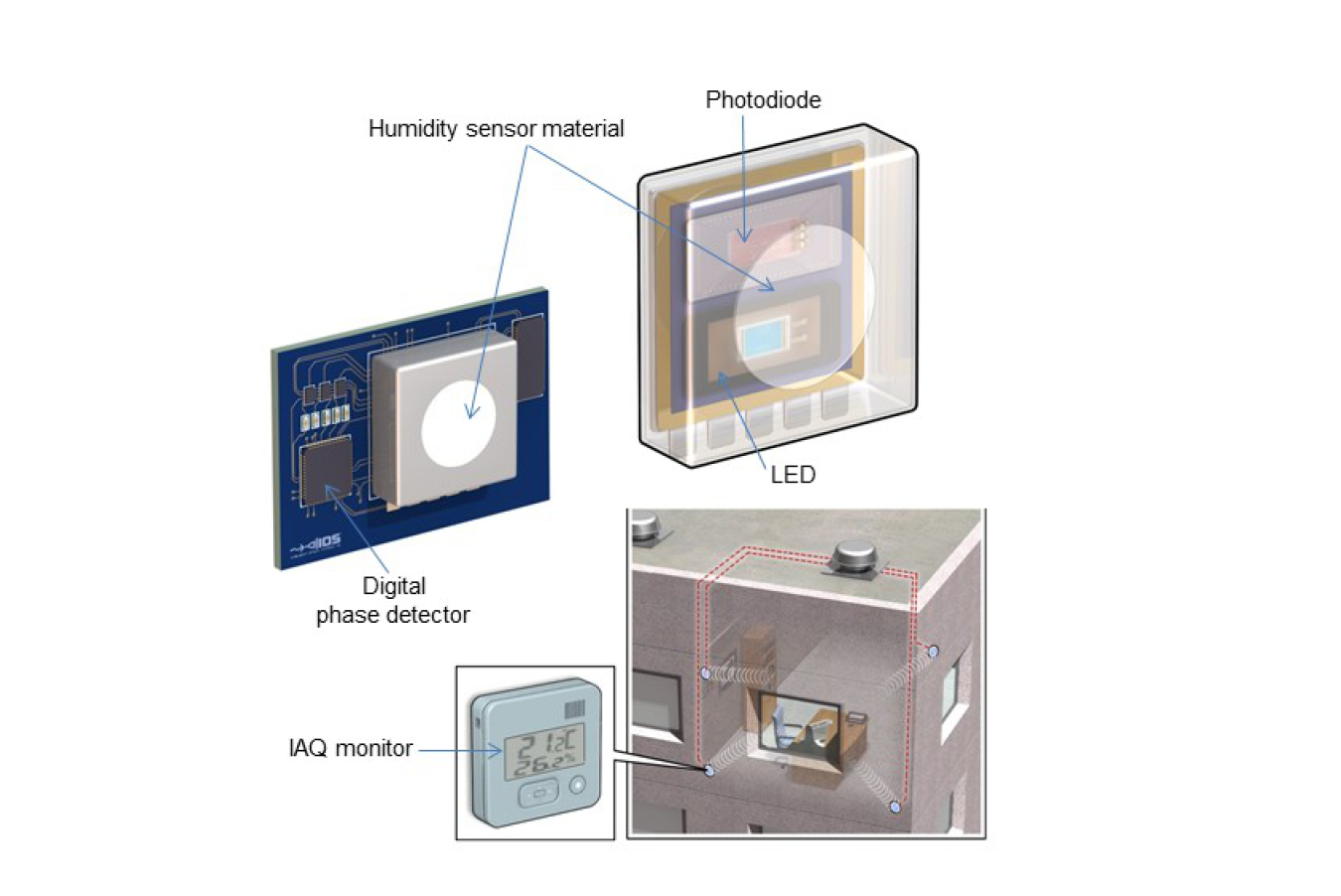In this SBIR phase I project, Intelligent Optical Systems is developing a humidity sensor whose accuracy does not appreciably degrade over time.
July 6, 2016
Lead Performer: Intelligent Optical Systems Inc. – Torrance, CA
Partner: Circuit Seed, LLC – Corona del Mar, CA
DOE Total Funding: $149,981
Project Term: June 13, 2016 – March 12, 2017
Funding Type: Small Business Innovation Research Phase I
Project Objective
Intelligent Optical Systems in collaboration with Circuit Seed will develop luminescence-based optical sensors for relative humidity, with unprecedented long-term stability, extremely high resistance to airborne contaminants, and no water retention, at a cost similar to those of commercially available sensors. They will combine two key innovations—the use of a passive material doped with a luminescent dye (for enhanced stability), and the implementation of Circuit Seed, a family of circuits that process analog signals on 100% digital components (for low-cost production).
Project Impact
Advanced management of indoor air quality (IAQ) is essential to meet the DOE goal of reducing energy use by 20% in a decade while cutting IAQ-related health problems. As part of any indoor air quality monitoring system, the proposed humidity sensor will contribute to the DOE’s Building Technologies Office (BTO) 2020 goal. A competitive humidity sensing technology will find broad use in many industries. Humidity sensing is applied to process controls, food storage and refrigeration, quality control, home-building, heating, ventilation, and air conditioning (HVAC), medical, healthcare, automotive, and numerous other fields of use.
Contacts
DOE Technology Manager: Marina Sofos
Principal Investigator: Jesus Delgado Alonso, Intelligent Optical Systems Inc.

